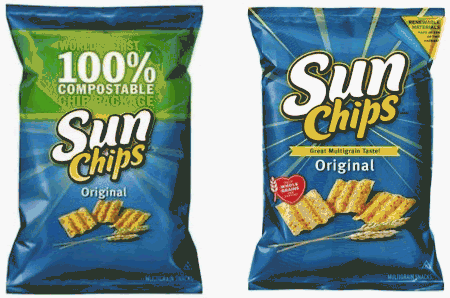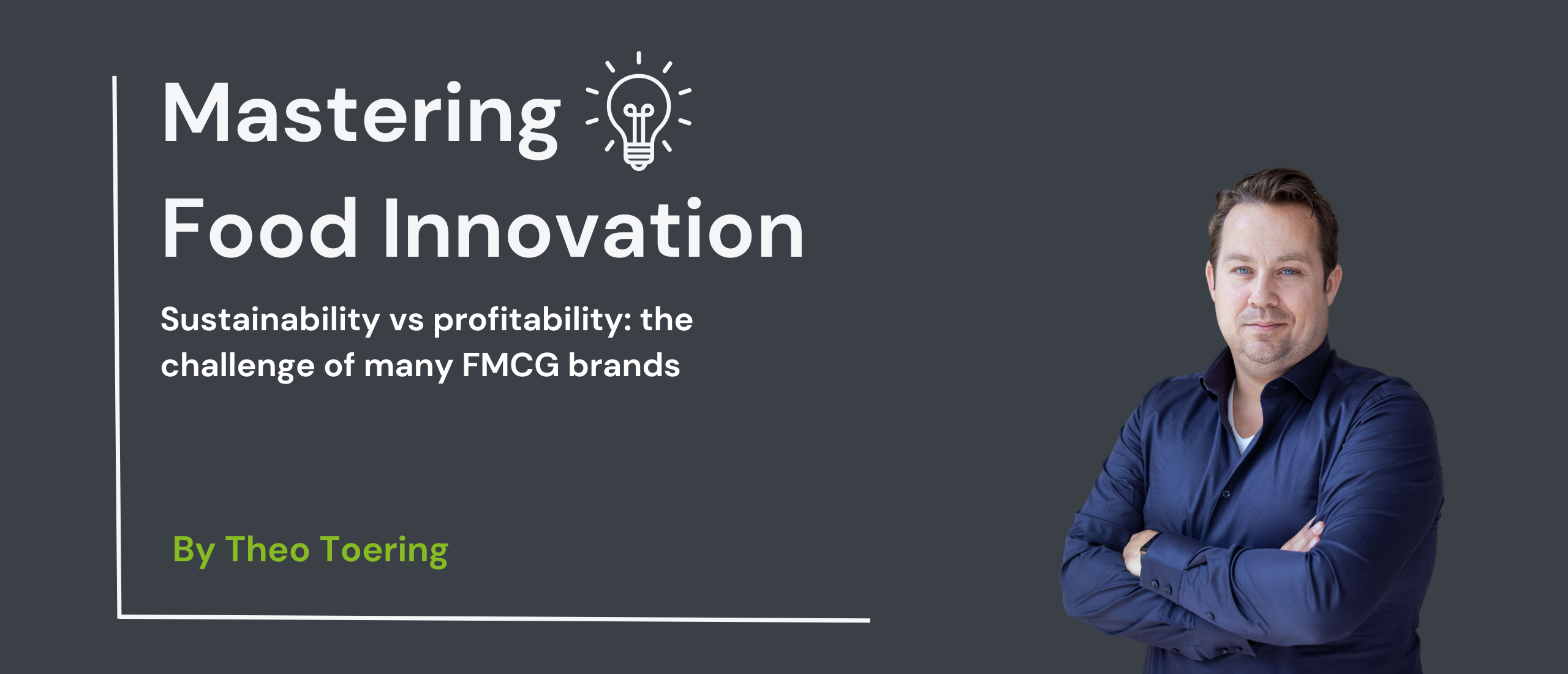Sustainability is a hot topic in the world of FMCG. More and more brands seem to be embracing sustainable innovations. In fact, a survey by CBA shows that 80% of the largest FMCG brands want to switch completely to recyclable packaging by 2030. At the same time, however, many brands are still reluctant to take this sustainable leap. They fear that new, sustainable packaging could lead to a drop in sales. This reluctance is justified: research shows that 70% of all packaging changes in the supermarket result in a drop in sales. In a quarter of cases, that drop is as much as 10% to 25%! Many FMCG brands want to contribute to sustainability, but not at the expense of their profitability. The logical question then is: how can FMCG brands become more sustainable without jeopardizing their profitability? You will discover the answer to that question in this newsletter.
A story about noisy chips
In 2010, Frito-Lay introduced a revolutionary packaging innovation: the world's first 100% compostable chip bag. This sustainable packaging for the Sun Chips brand was to become the new packaging standard in the food industry. At the time, Frito-Lay had invested a lot of time and money in this innovation, but there was one major problem: the chip bag made incredible noise due to its molecular structure - even louder than the cockpit of a fighter jet!
Consumers were not at all happy with the new packaging. The extreme noise completely ruined the user experience. Some consumers even claimed that the packaging was deliberately designed to make as much noise as possible. Frito-Lay wanted to take a step toward a more sustainable future with this innovation, but forgot the most important thing: the consumer. Sustainability means nothing if it ruins the consumer experience.
For Frito-Lay, it didn't stop at a few disgruntled customers. The outcry was so great that a Facebook group was created with the cynical name “Sorry But I Can't Hear You Over This SunChips Bag. This group grew to 36,000 members who shared their complaints and frustrations. Sales also took a big hit: 52 weeks after the launch, Sun Chips sales dropped by over 11%! The drop was so steep that the brand eventually had to revert to the old plastic packaging. The lesson is clear: a new sustainable packaging is not sustainable if it ruins the consumer experience.

The new (left) vs. the old (right) design of Sun Chips.
The success of new packaging depends on the consumer experience
As you could read in the intro, research shows that 70% of all new packaging leads to a drop in sales. You may be wondering why this percentage is so high and what sets successful packaging innovations apart from the rest. You can find the answer by zooming in on the consumer.
New packaging is not always pleasing to consumers. They can disrupt the experience in several ways. One example is the disruption of the user experience, as you saw in the Frito-Lay case. Another important disruption has to do with consumer buying behavior. Many consumers do their shopping on autopilot. They often choose products they recognize and follow the path of least mental resistance. When packaging changes drastically, it can significantly reduce the product's recognizability. This can cause consumers to switch to another product that they do recognize.
Being aware that new packaging can disrupt the consumer experience is the first step. It is crucial to put the consumer at the center of every packaging innovation. With every packaging change, ask yourself: will this change improve or worsen the consumer experience? This mindset will help you avoid the biggest pitfalls.
The importance of testing in real-life scenarios
It may seem like consumers don't want sustainability at all, but that's not the case. Consumers do want more sustainable products, but they also expect convenience, affordability and a seamless experience. New packaging that is inconvenient to use or leads to higher prices is simply not enough. That is why it is crucial to test new packaging in real-life scenarios.
Testing innovations in a realistic environment, such as the supermarket, helps identify pitfalls and ensures that the packaging resonates with consumers before launch. Solving problems at this stage is much easier than trying to “fix” failed packaging later.
More and more FMCG brands are therefore using in-store research to validate their innovations. In in-store research involves placing a package in a supermarket to observe how consumers react. Is the packaging picked up? Is it compared to alternatives? More importantly, does the product actually end up in the shopping cart? By analyzing consumer behavior in a realistic setting, brands can quickly determine whether new packaging has a positive or negative impact on sales.
In addition, in-store research offers insights beyond sales figures. Through qualitative interviews with consumers on the store floor, brands can discover what consumers really think and feel about new packaging. This helps fine-tune packaging so that it is not only sustainable, but also attractive and functional for consumers!
Watch our webinar on successfully launching sustainable packaging in retail
On Thursday, 30 January, we hosted an online webinar on launching sustainable packaging. In just 30 minutes, you'll discover how to launch new packaging for your brand without risking a drop in sales. Curious? Click here to watch the recording - completely for free!






